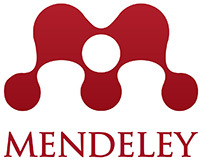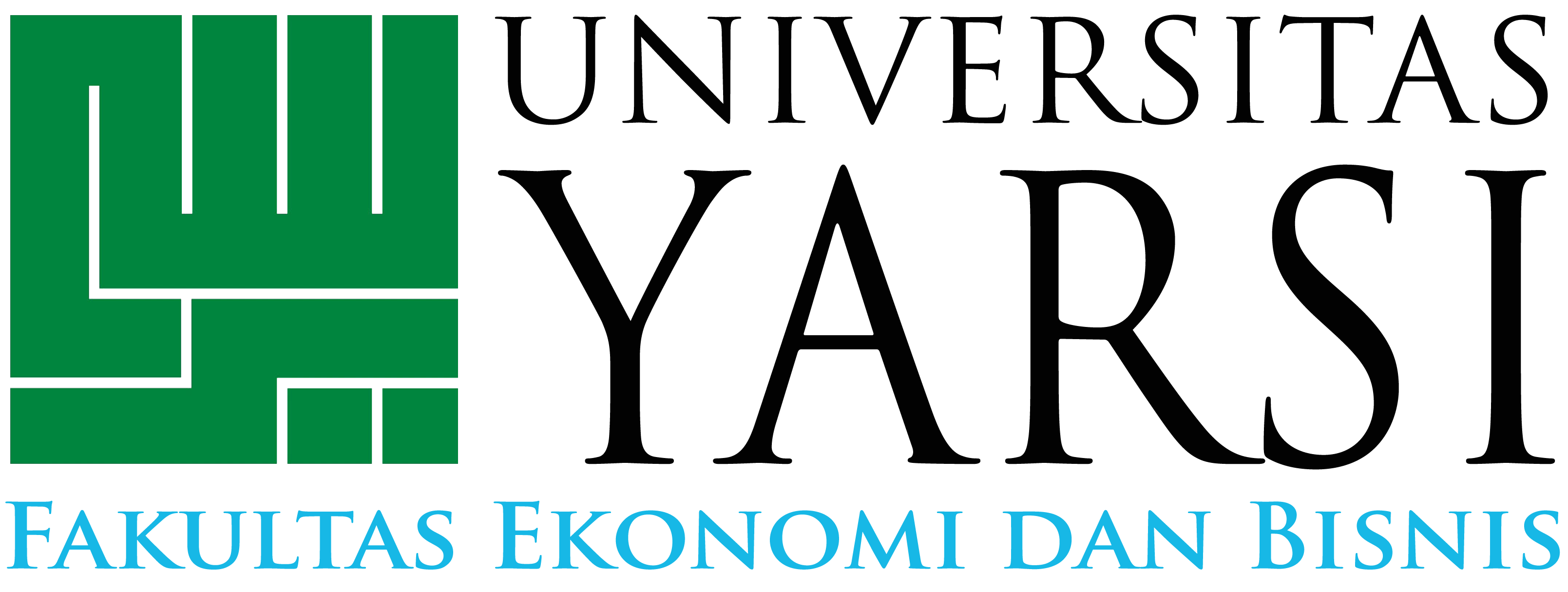Policies
- Focus and Scope
- Section Policies
- Peer Review Process
- Publication Frequency
- Open Access Policy
- Archiving
- Publication Ethics
- Review Guideline
- Plagiarism Screening
Focus And Scope
Journal of Accounting, Management and Economics Research (JAMER) is a journal published by the Faculty of Economics and Business YARSI University in collaboration with some the Professional Association, periodically twice a year (January and July). JAMER publishes original research and critcism into issues in the field of accounting, finance, business, management, and economics research. JAMER is an peer-reviewed journal, which is devoted to current issues of accounting, management, and economics and covers diversified topics by including:
| Accounting and Finance | Business and Managemet | Economics |
| Financial accounting | Marketing managemet | Development economics |
| Accounting management | Human capital management | Financial economics |
| Auditing | Information system | Political economics |
| Taxation | Business administration | Monetary systems |
| Public Accounting | Operation management | International trade |
| Sharia Accounting | Project management | Islamic economics |
| Corporate finance | Behaviour and organization | Energy economics |
| Corporate governance | Business strategy | Natural resources economics |
| Investment and Markets | Technology management | Technological economics |
| Banking | Innovation and entrepreuneurship | Engineering economics |
| Financial technology | Business law and ethics | Central bank and policy |
| Market microstructure | International management | Public policy |
Peer-review. To eliminate bias, the journal employs double-blind peer review, in which neither the authors nor the reviewers are aware of each other's identities. The Committee on Publication Ethics Guidelines for Peer Reviewers, which gives a thorough guide on the ethics of peer review, is followed by YARSI University.
Journal policies. The journal publishes its rules, which include instructions for authors and reviewers as well as information regarding submission, editorial, and publication procedures. The rights and duties of all participants are outlined to guarantee a smooth and ethical publication process.
Open Access Journal. The journal is an open-access publication. This publication, along with the others produced by FEB YARSI University, is published by Open Access, allowing readers to freely reuse the information. Open Access enables the unfettered exchange of intellectual material and contributes to the global promotion of knowledge.
Fees and charges. Article Publication Charges do not cover the publication procedure (APCs).
Copyright. Individual papers are released Open Access under the Creative Commons License: CC-BY-SA 4.0, which allows free use, distribution, and reproduction in any form as long as the original author and source are cited. Authors maintain ownership of their articles' intellectual property rights but allow FEB YARSI University the right of first publication.
Final Submission Checklist. Before sending their manuscripts to the publication, the authors are needed to verify their submission requirements. Before the publisher may process the document, the following requirements must be met:
- The contribution has never been published before.
- The text should precisely correspond to the style and bibliographic requirements of the publisher, as indicated in the author guidelines.
- Additionally, the author must file a Copyright Transfer Agreement.
Faculty of Economics and Business, YARSI University, Indonesia, publishes the journal. At all phases of publishing, YARSI University adheres to the Principles of Transparency and Best Practice in Scholarly Publishing.
Section Policies
Articles
Invited Articles
Peer Review Process
The authors of accepted, revised, or rejected articles will be informed of the reviewers' decisions. Authors must submit the manuscripts through an electronic method (OJS), while each will be peer reviewed (blind review) by 2 (two) reviewers. Reviewers undertake peer review online, and the results are emailed to the author. The maximum review time for OJS is 1 (one) months after submitting the manuscript. Acceptance, revision, or rejection of the article could result from the review.
Publication Frequency
JAMER Published in January and July every year. Manuscripts are sent at any time via online (Registration). The manuscript will be reviewed if it is in accordance with the template and the focus and scope journal
Open Access Policy
This journal provides immediate open access to its content on the principle that making research freely available to the public supports a greater global exchange of knowledge.
Archiving
This journal utilizes the LOCKSS system to create a distributed archiving system among participating libraries and permits those libraries to create permanent archives of the journal for purposes of preservation and restoration. More...
Publication Ethics
Publication Ethics
Journal of Accounting, Management and Economics Research (JAMER) is a journal published by the Faculty of Economics and Business YARSI University in collaboration with some of the Professional Association, periodically twice a year (July and January). JAMER publishes original research and criticism into issues in the field of accounting, finance, business, management, and economics research.
Author Ethics
- Reporting; authors should report the process and results of their research fairly, clearly, precisely, accurately, thoroughly, and impartially as well as save the data well. Honesty is expected in presenting any data and information listed in content and research results.
- Originality; authors make a statement that the paper submitted to the journal editor is original (from the author's own ideas), has never been delivered and published in any media, in any language, and not in the process of submission to another publisher. The case of publication duplication and deception, the article is subject to be removed from this journal.
- Clear sources; authors should mention and ensure that any reading materials used as citations and bibliography are written clearly and completely. Authors are strictly forbidden to quote the writings of others without citing the original source.
- Responsibility; authors are fully responsible for the data and research writings, in terms of methods, analysis, calculation, and details. If verification is required from editors and reviewers, the authors are willing to answer it clearly, precisely and fairly.
- Agreement; authors ensure that the names listed in the article are based on contributions of ideas and thoughts every writer and have been approved by the entire team of writers. Any changes, reductions or additions of author names, should be approved the team of writers. Any other parties contributing fully ( non-substance ) in writing this paper, the authors express their gratitude to the relevant parties.
- Punctuality; authors revise the script and edit texts punctually for the sake of discipline and regular journal publication. Otherwise, the authors are ready to take the consequences, which is the delay of journal article publication.
- Disclosure of conflicts of interest; authors uphold copyright and privacy of one another to avoid conflicts of interest. In the event of a conflict of interest with other parties, the authors must solve it justly and wisely.
Editor Ethics
- Neutrality; the editor is neutral in selecting and screening manuscript. The editor must be objective and fair to all writers who submitted their written works. The editor is forbidden to be discriminative to the authors in terms of gender, ethnicity, religion, race, intergroup, or nationality.
- Reporting; editor reports the selection and reviews scripts clearly and accurately to the author based on accuracy, completeness, and clarity of reporting of result research and its development, including editing techniques and the use of guidelines for publication and screenwriting.
- Communicative; editor communicates effectively and efficiently in the process of publishing the journal. Every suggestion and criticism from authors, reviewers, and journal managers should be addressed clearly, fairly and transparently.
- Fairness; editor distributes scripts to editor team members and reviewers fairly based on their respective competence.
- Professional; editor works professionally based on his duties and responsibilities. The editor should understand any policy related to journal publication. Editor ensures that every script has undergone the editorial process and review correctly, fairly, and objectively.
- Responsibility; editor takes full responsibility for the success of journal publication. Editor guarantees that every journal article published is a new paper and not a copy, and gives benefits to those reading and accessing the journals.
- Disclosure of conflicts of interest; editor upholds copyright and privacy of each other to avoid conflict of interest. Should a conflict of interest arise with other parties, an editor must solve it justly and wisely.
Reviewer Ethics
- Neutrality; reviewer is fair, objective, unbiased, independent, and only in favor of scientific truth. The script review process is carried out professionally without distinguishing the writer’s background. The reviewer is prohibited conduct a review of papers involving himself, either directly or indirectly.
- Professional; reviewer should be critical and professional in assessing a paper (related to his expertise), open about new things, able to keep the secret of the things being assessed, does not take personal advantage of the paper he assesses, as well as has a passion for improving written works. The reviewer has the right to refuse a script if it does not correspond to his expertise. He then can recommend it to the other more competent reviewers in accordance with the scope of publication.
- Quality assurance; reviewer has a duty to assist editors in improving the quality of paper he reviews. Reviewer analyzes papers on the substance not on grammar, punctuation, and typos. The reviewer is required to uphold the basic principles and scientific analysis in the process of reviewing a paper. Reviewer works on the principle of truth, novelty, and originality; prioritizes benefit of the paper for the development of science, technology, and innovation; as well as understands the impact of paper on the development of science.
- Punctuality; reviewer reviews the script and gives a response to the editor quickly, expected to be on time. If the time is not enough, the reviewer then informs the editor with a clear reason for the sake of discipline and regularity of journal publication.
- Disclosure of conflicts of interest; reviewer upholds copyright and privacy of each other in order to avoid conflicts of interest. Should a conflict of interest arise with other parties, the reviewer must finish it justly and wisely.
Journal Management Ethics
- Decision-making; journal managers should define the vision, mission, and goals of the organization in journal publication based on the recommendation of reviewers and the editorial board. To do so, journal managers are neutral and free from conflicts of interest of individuals or groups, business aspects, aspects of ethnicity, religion, race, and intergroup.
- Freedom; journal managers give freedom to the reviewer and editor to create harmony at working atmosphere and mutual respect for one another in order to guarantee and protect intellectual property rights, particularly those related to the management of funds received from third parties. Journal managers encourage editors and reviewers to apply the ethics clearance including confidentiality, licensing, and special requirements in research on humans, animals, and other living creatures.
- Responsibility; journal managers are responsible for the guideline of journal publication policies, starting from the name of an issue, scientific scope, script writing style, collaboration, licensing and legal publications, and evaluation of script publication.
- Promotion; journal managers promote and ensure the sustainability of journal publication. Journal managers are entitled to determine the funding in accordance with the policies and needs of journal publication. In its management, funders do not intervene in terms of issue substance. Source of research and development fund is included in the publication without affecting the reader's perception.
- Disclosure of conflicts of interest; journal managers uphold copyright and privacy of each other to avoid conflicts of interest. In the event of the conflict of interest with other parties, journal managers must finish it justly and wisely.
Further information on ethics of scientific publication, please access Committee On Publication Ethics (COPE) site.
Review Guideline
Article Substance Review
A reviewer guideline is used to review article material against the standard components of the article.
Title: The title must describe the manuscript's subject adequately, clearly, precisely, and not have multiple interpretations.
Abstract: The abstract should briefly state the research purpose, the methods used, the results, and the core conclusions.
Reference Review: Authors must cite others who contributed to the article. Excessive cited sources must be avoided. The head in the introduction must illustrate the author's originality and novelty through gap analysis.
Purpose: The purpose of the article review should be well explained and will be able to answer the hypothesis.
Methods: The methods utilized to accomplish goals should be stated accurately and thoroughly enough for a competent reader to duplicate the author's work. The research tools, resources, equipment platforms, and procedures must be described.
Clarity: To be clearly understood, writers must write information on research methodology and results in articles in a straightforward, concise, and effective manner.
Delivery organization: Manuscripts must develop/explain the research subject logically and effectively.
Duplication: The details of published research by the author or others are not duplicated in manuscripts. If there are any duplications in the text, the reviewer can provide additional remarks. Check out whether several figures and tables may be added to create the Manuscript shorter without affecting content.
Calculations: Reviewers check if you can verify the authors' findings in a few randomly selected cases.
Text-to-Tables-and-Figures Correlation: All figures and tables must be linked in the text/paragraphs. The text's statements must relate to the contents of the tables and figures.
Titles of Figures and Tables: The contents should be stated in the title. Kindly suggest ways to improve the table/image titles quality.
Title in Table/Caption: interpretation should be unequivocal and use the correct SI units.
Graphics: Data for presenting graphs/images must be accurate.
Conclusion: Conclusions to answer the hypothesis must be stated adequately and clearly and must be supported by data and testing.
Allegation: The author must clearly distinguish between conjecture and fact.
References: All references must be provided in the Bibliography/References section of the manuscript. There are at least 15 references, with 60% primary (scientific journals, proceeding articles, reference books, thesis/dissertation) published in the last ten years.
Plagiarism Screening
Article inspection was carried out using MENDELEY or TURNITIN, and Journal of Accounting, Management and Economics Research (JAMER) accepts articles with a similarity rate of less than 25%.








